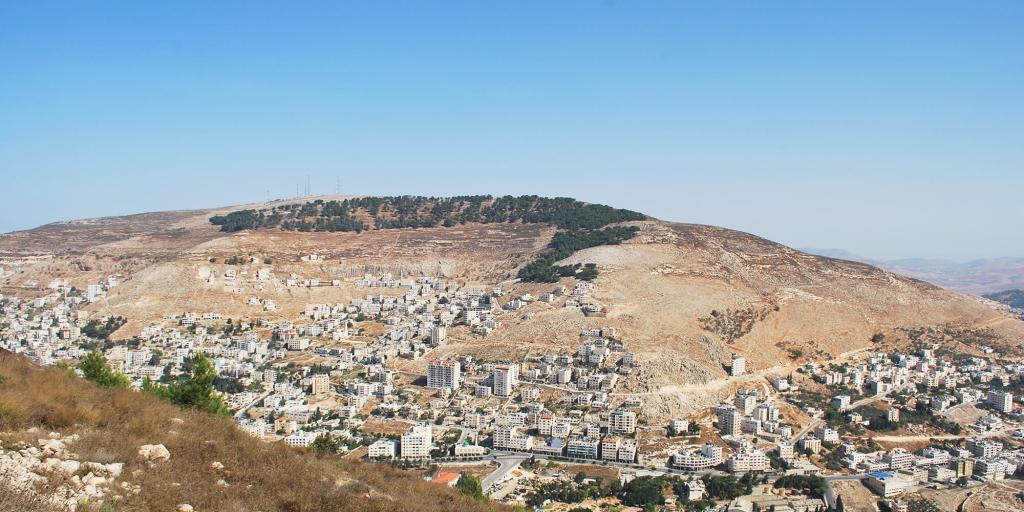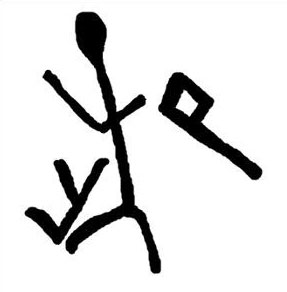
“You are cursed by El YHW”—What is the Mt. Ebal tablet?
What is the Mount Ebal tablet, and what is the connection between this ancient artifact and one of the most important accounts in Israel’s earliest history? Before answering these questions, and to better appreciate just how old and how important this ancient lead tablet is, it may be helpful to briefly mention some other biblical artifacts.
The famous Dead Sea Scrolls are currently the oldest known ink-written Hebrew-language Bible texts and date from somewhere between 250 BC and 68 AD They are invaluable in how they show the inerrancy and accurate preservation of the Old Testament text.
Older than the Dead Sea Scrolls are various “proto-Hebrew” texts preserved as carvings in ancient pottery or ceramics, such as the Qeiyafa Ostracon and the Gezer Calendar, both dated from about 1000 BC (“The Oldest Hebrew Script and Language,” Biblical Archaeology Society, September 27, 2022). These are not copies of biblical passages but are instead some of the oldest artifacts of ancient Hebrew text that contain biblical references. Another ancient artifact, King Shalmaneser III’s black limestone monolith (housed in the British Museum), describes a battle in which King Ahab of Israel was defeated and is dated to about 850 BC. And the granite Merneptah Stele (housed in the Cairo Museum) is one of the oldest artifacts known. It mentions the nation of “Israel” and is dated to around 1209 BC. However, none of these are as ancient as the Mt. Ebal tablet.
The Mt. Ebal tablet is a small, folded lead tablet with text on the outside and inside (scribes began inscribing on metal in the Bronze Age), excavated from Mt. Ebal and analyzed in 2019. The tablet could not be opened without damaging it, so it was digitally scanned by the Academy of Sciences of the Czech Republic. According to a report from the Associates for Biblical Research, “the scan revealed what could be up to 48 Hebrew archaic letters” that had been incised by a pen or stylus. Some skeptics argue that the inscriptions are too obscure to be sure, but other experts are convinced that the extensive X-ray and CT scans reveal ancient Hebrew text (“An Early Israelite Curse Inscription from Mt. Ebal?,” Biblical Archaeology Society, May 19, 2023).
After God delivered ancient Israel from their Egyptian captivity, He gave them the Ten Commandments at Mt. Sinai. After that, He told Moses to instruct Israel that after they crossed over the Jordan, they were to proclaim blessings for obedience to His commandments on Mt. Gerizim and curses for disobedience on Mt. Ebal (Deuteronomy 11:29). Then, after the crossing, Moses’ successor, Joshua indeed “built an altar to the Lord God of Israel in Mount Ebal” as God had instructed, and “read all the words of the law, the blessings and the cursings” (Joshua 8:30–34).
Conservative biblical scholars place the Exodus and Israel’s wanderings in the mid-1440s BC. The Mt. Ebal tablet is from approximately this time, and specifically this location (“‘You are Cursed by the God YHW:’ an early Hebrew inscription from Mt. Ebal,” Heritage Science, volume 11, May 12, 2023).
The translation of the inner text reads:
You are cursed by El YHW, cursed.
You will die, cursed—cursed, you will surely die.
Cursed you are by YHW—cursed.
If the scans are correct, the language and literary structure of the Mt. Ebal tablet mirrors the “blessings and cursings” language found in the biblical account of Deuteronomy 27 and Joshua 8, and finding the tablet on Mt. Ebal synchronizes with the biblical record that it was from Mt. Ebal that the curses were to be proclaimed if the Israelites did “not obey the commandments of the Lord” (Deuteronomy 11:26–32). Moreover, this would be the most ancient Hebrew inscription—and the oldest mention of the name of God, the abbreviated YHW—ever found within the border of Israel (Heritage Science).
The tablet will continue to be studied, but yet again, an archaeological discovery appears to perfectly synchronize with the biblical account. For further study about the wonderfully and divinely preserved Bible, please read or request a free copy of The Bible: Fact or Fiction? Also be sure to check out other resources about the veracity of the biblical text, such as “Footprints of Jesus” and “I Am Ashurbanipal,” available right here, at Tomorrow's World.

Biblical Archaeology Society: An Early Israelite Curse Inscription from Mt. Ebal?
Stay up to date with our Weekly Digest Email!
Tomorrow's World ComMentary Podcast
Subscribe to Tomorrow's World Commentary podcasts on iTunes and Google Play!



